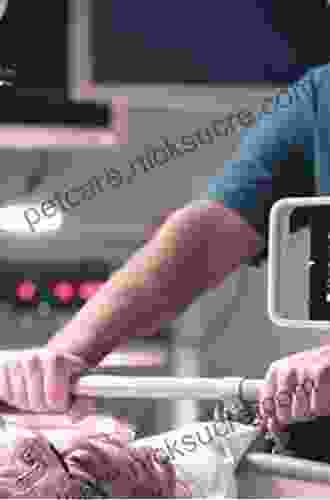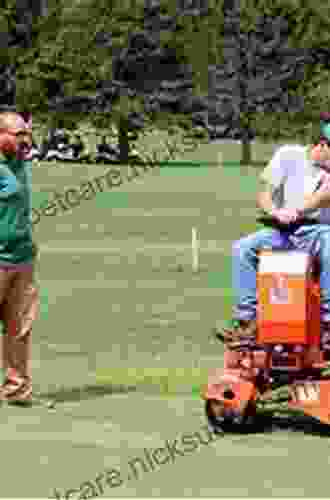Monitoring Technologies in Acute Care Environments: A Comprehensive Guide

In acute care environments, such as hospital emergency departments and critical care units, patients require constant monitoring to ensure their health and well-being. Monitoring technologies play a crucial role in this process, enabling healthcare providers to track vital signs, assess patient status, and make informed decisions regarding treatment. This article provides a comprehensive overview of monitoring technologies used in acute care settings, covering their types, applications, benefits, and limitations.
Types of Monitoring Technologies
- Vital Signs Monitors: These devices measure and display vital signs such as heart rate, blood pressure, respiratory rate, and temperature. They can be used continuously or intermittently, and some models include alarms to alert healthcare providers to abnormal readings.
- Electrocardiogram (ECG) Monitors: ECG monitors record the electrical activity of the heart, providing information about heart rate, rhythm, and conduction. They are used to diagnose and monitor cardiac conditions, such as arrhythmias and myocardial infarction.
- Pulse Oximeters: Pulse oximeters measure the oxygen saturation of the blood, indicating the level of oxygen available to tissues and organs. They are used to monitor patients with respiratory conditions, such as pneumonia and chronic obstructive pulmonary disease (COPD).
- Capnography Monitors: Capnography monitors measure the level of carbon dioxide (CO2) in the breath. They are used to assess ventilation and assist in the management of patients undergoing mechanical ventilation.
- Central Venous Pressure (CVP) Monitors: CVP monitors measure the pressure in the large vein that carries blood to the heart from the upper body. They are used to assess fluid status, cardiac function, and monitor patients with heart failure or renal dysfunction.
- Intra-Arterial Blood Pressure (IABP) Monitors: IABP monitors measure blood pressure directly from an artery, providing continuous and accurate readings. They are used in critically ill patients, such as those with shock or severe hypertension.
- Telemetry Monitors: Telemetry monitors transmit patient data wirelessly to a central monitoring station, allowing healthcare providers to monitor patients from a distance. This technology is often used for ambulatory patients or those who need continuous monitoring but can move around freely.
Applications of Monitoring Technologies
Monitoring technologies are used for a variety of purposes in acute care environments, including:
4.6 out of 5
| Language | : | English |
| File size | : | 10352 KB |
| Text-to-Speech | : | Enabled |
| Screen Reader | : | Supported |
| Enhanced typesetting | : | Enabled |
| Print length | : | 1033 pages |
- Early Detection of Deterioration: Monitoring devices can detect subtle changes in vital signs and other parameters, alerting healthcare providers to potential patient deterioration. This allows for early intervention and prevents adverse events.
- Continuous Surveillance: Telemetry and central monitoring systems enable continuous surveillance of patients, even those who are mobile or in isolation. This helps to identify and address problems promptly.
- Diagnosis and Management of Conditions: Monitoring technologies provide valuable information for diagnosing and managing acute conditions, such as arrhythmias, sepsis, and respiratory failure.
- Assessment of Treatment Response: Monitoring devices can be used to track patient response to treatment, allowing healthcare providers to adjust care plans as needed.
- Research and Quality Improvement: Monitoring data can be used for research purposes and quality improvement initiatives, helping to optimize patient care and outcomes.
Benefits of Monitoring Technologies
Monitoring technologies offer numerous benefits in acute care environments, including:
- Improved Patient Safety: Early detection of deterioration and continuous surveillance help to prevent adverse events and ensure patient safety.
- Enhanced Patient Outcomes: By providing healthcare providers with real-time information, monitoring technologies facilitate timely intervention and optimal treatment, leading to improved patient outcomes.
- Increased Efficiency: Central monitoring systems and telemetry devices allow healthcare providers to monitor multiple patients simultaneously, improving efficiency and reducing workload.
- Reduced Costs: Monitoring technologies can contribute to cost savings by preventing complications and reducing the length of hospital stays.
Limitations of Monitoring Technologies
While monitoring technologies provide significant benefits, there are also some limitations to consider:
- False Alarms: Monitoring devices can sometimes generate false alarms, which can lead to unnecessary interventions and patient anxiety.
- Data Overload: Continuous monitoring can result in large amounts of data, which can be challenging to interpret and manage.
- Technical Issues: Monitoring devices can malfunction or experience technical difficulties, which can disrupt patient care.
- Cost: Monitoring technologies can be expensive to purchase and maintain, especially advanced devices such as IABP monitors and telemetry systems.
Choosing the Right Monitoring Technologies
Selecting the appropriate monitoring technologies for an acute care environment requires careful consideration of several factors, including:
- Patient Population: The type and severity of patient conditions should guide the choice of monitoring devices.
- Monitoring Needs: Determine the specific parameters that need to be monitored and the frequency of monitoring required.
- Budget: The cost of monitoring technologies should be weighed against their potential benefits.
- Staff Training: Healthcare providers must be trained to properly use and interpret the data from monitoring devices.
Integration with Electronic Health Records
Integrating monitoring technologies with electronic health records (EHRs) is essential for maximizing their value. EHR integration allows for seamless data transfer, reducing manual data entry errors and providing a comprehensive view of patient health information. Additionally, EHR integration can trigger alerts and notifications based on monitoring data, improving patient safety and reducing response times.
Monitoring technologies play a crucial role in acute care environments, enabling healthcare providers to monitor patients' health and well-being continuously. By providing real-time information, monitoring devices help in early detection of deterioration, diagnosis and management of conditions, and assessment of treatment response. They improve patient safety, enhance patient outcomes, and increase efficiency. However, it is important to consider the limitations of monitoring technologies and carefully select devices based on patient needs, budget, and staff capabilities. Integrating monitoring technologies with EHRs maximizes their value by providing a comprehensive view of patient health information and enhancing clinical decision-making.
4.6 out of 5
| Language | : | English |
| File size | : | 10352 KB |
| Text-to-Speech | : | Enabled |
| Screen Reader | : | Supported |
| Enhanced typesetting | : | Enabled |
| Print length | : | 1033 pages |
Do you want to contribute by writing guest posts on this blog?
Please contact us and send us a resume of previous articles that you have written.
 Fiction
Fiction Non Fiction
Non Fiction Romance
Romance Mystery
Mystery Thriller
Thriller SciFi
SciFi Fantasy
Fantasy Horror
Horror Biography
Biography Selfhelp
Selfhelp Business
Business History
History Classics
Classics Poetry
Poetry Childrens
Childrens Young Adult
Young Adult Educational
Educational Cooking
Cooking Travel
Travel Lifestyle
Lifestyle Spirituality
Spirituality Health
Health Fitness
Fitness Technology
Technology Science
Science Arts
Arts Crafts
Crafts DIY
DIY Gardening
Gardening Petcare
Petcare David Wolff
David Wolff Wolfgang Jank
Wolfgang Jank House Of Talent
House Of Talent Matthew B Crawford
Matthew B Crawford Michael Schiavone
Michael Schiavone Ukay J Ekong
Ukay J Ekong Wendy Sullivan
Wendy Sullivan Egerton Ryerson Young
Egerton Ryerson Young Brian Fagan
Brian Fagan Joshua G Shifrin
Joshua G Shifrin Philippa Langley
Philippa Langley Elizabeth Heavey
Elizabeth Heavey Leona S Aiken
Leona S Aiken Six Sisters Stuff
Six Sisters Stuff Karyn Garvin
Karyn Garvin Will Nett
Will Nett Edward A Bell
Edward A Bell Kyler Shumway
Kyler Shumway Rachel Reed
Rachel Reed Leslie Anthony
Leslie Anthony Helen Garabedian
Helen Garabedian Kajal Gupta
Kajal Gupta Julie K Briggs
Julie K Briggs Berkshire K Greene
Berkshire K Greene Andy Kirkpatrick
Andy Kirkpatrick Jacob Gardner
Jacob Gardner 15th Edition Kindle Edition
15th Edition Kindle Edition Daniel Todd Gilbert
Daniel Todd Gilbert Jareth Tempest
Jareth Tempest Michele Smith
Michele Smith Mark Santino
Mark Santino The Lodge Company
The Lodge Company John L Havlin
John L Havlin 1st Ed 2017 Edition Kindle Edition
1st Ed 2017 Edition Kindle Edition Mary Douglas
Mary Douglas Lisa Marasco
Lisa Marasco Harvey Penick
Harvey Penick Livy
Livy Holly Hook
Holly Hook Lisa R Cohen
Lisa R Cohen Ray Mcnulty
Ray Mcnulty Nick Redfern
Nick Redfern Guillermo Gonzalez
Guillermo Gonzalez Felicity Cloake
Felicity Cloake Clifford E Trafzer
Clifford E Trafzer Mike Chappell
Mike Chappell Susan Ludington Hoe
Susan Ludington Hoe Geraint Thomas
Geraint Thomas David Clark
David Clark Daisaku Ikeda
Daisaku Ikeda Cathy Raubenheimer
Cathy Raubenheimer Phyllis Franklin
Phyllis Franklin David Kahn
David Kahn Louise Warneford
Louise Warneford Lou Nanne
Lou Nanne Glenda Green
Glenda Green Steve Garratt
Steve Garratt Dierdre Wolownick Honnold
Dierdre Wolownick Honnold Sara Snow
Sara Snow Linda L French
Linda L French David Barrett
David Barrett Emily Vikre
Emily Vikre Jeanne Oliver
Jeanne Oliver Kathleen Buckstaff
Kathleen Buckstaff Jandy Nelson
Jandy Nelson Janice Hudson
Janice Hudson Jacob Cohen
Jacob Cohen William E Glassley
William E Glassley Raven Morgaine
Raven Morgaine Bud Hasert
Bud Hasert Jacqueline Corricelli
Jacqueline Corricelli Mark Miller
Mark Miller Shane Jones
Shane Jones Robert Irwin
Robert Irwin Francis L Macrina
Francis L Macrina Launi Meili
Launi Meili Tamonya Sands
Tamonya Sands Eryk Lewinson
Eryk Lewinson Christa Mackinnon
Christa Mackinnon Jill Heinerth
Jill Heinerth Deborah T Goldberg
Deborah T Goldberg Larry Kaniut
Larry Kaniut Kim Mack Rosenberg
Kim Mack Rosenberg Jeremy Lent
Jeremy Lent Karina Manta
Karina Manta Broccoli Lion
Broccoli Lion Natsuki Takaya
Natsuki Takaya Robert Lomas
Robert Lomas Lh Press
Lh Press Nicole Libin Phd
Nicole Libin Phd Botros Rizk
Botros Rizk Forrest Willett
Forrest Willett Ron Larson
Ron Larson Brian Meier
Brian Meier Rebekah Dodson
Rebekah Dodson Lei Wang
Lei Wang Paul Freedman
Paul Freedman Vaclav Smil
Vaclav Smil Daniel L Schacter
Daniel L Schacter Belinia Xenrale
Belinia Xenrale Cathy Hester Seckman
Cathy Hester Seckman Ejike Ifeanyichukwu
Ejike Ifeanyichukwu Keshia A Case
Keshia A Case Larry Krieger
Larry Krieger Intelligent
Intelligent Desiree Trattles
Desiree Trattles Joshua James
Joshua James Saroo Brierley
Saroo Brierley Orji Onyebuchi
Orji Onyebuchi Karl Rehn
Karl Rehn Lindsey Bliss
Lindsey Bliss Isa Herrera
Isa Herrera Jesse M Ehrenfeld
Jesse M Ehrenfeld Jonathan Vaughters
Jonathan Vaughters 1st Ed 2018 Edition Kindle Edition
1st Ed 2018 Edition Kindle Edition Liz Thomas
Liz Thomas Skylar Kergil
Skylar Kergil 1st Ed 2016 Edition Kindle Edition
1st Ed 2016 Edition Kindle Edition 1st Ed 2021 Edition Kindle Edition
1st Ed 2021 Edition Kindle Edition Alan Naldrett
Alan Naldrett Bob Chandler
Bob Chandler Dorthe Berntsen
Dorthe Berntsen Graham Priest
Graham Priest Robert Chu
Robert Chu 1st Edition Kindle Edition
1st Edition Kindle Edition Chip Ingram
Chip Ingram Kim Dwinell
Kim Dwinell Kara Goucher
Kara Goucher Rachael Bell Irving
Rachael Bell Irving Peter Burns
Peter Burns Amita Jassi
Amita Jassi Christine E Sleeter
Christine E Sleeter Guy Harrison
Guy Harrison Gerald Beaudry
Gerald Beaudry David I Spivak
David I Spivak Jane Yeadon
Jane Yeadon Mike Barrett
Mike Barrett Peter Heller
Peter Heller Irene Spencer
Irene Spencer Mildred Council
Mildred Council Jack Newfield
Jack Newfield Piotr Naskrecki
Piotr Naskrecki Sarah Thompson
Sarah Thompson Evelyn Raab
Evelyn Raab My Daily German
My Daily German Ewan Mcgregor
Ewan Mcgregor Zachary Willey
Zachary Willey Nicholas J Saunders
Nicholas J Saunders John Vigor
John Vigor Dylan Dethier
Dylan Dethier Didier Reiss
Didier Reiss 6th Edition Kindle Edition
6th Edition Kindle Edition Keith Bowden
Keith Bowden Michael Clarke
Michael Clarke Scott Matthews
Scott Matthews Daniel H Pink
Daniel H Pink Stacey Steinberg
Stacey Steinberg Monica Beyer
Monica Beyer Mara Rutherford
Mara Rutherford Adam Cesare
Adam Cesare Laura Luther
Laura Luther James Ragonnet
James Ragonnet Deborah Spungen
Deborah Spungen Nathan D Lang Raad
Nathan D Lang Raad Modestus Anabaraonye
Modestus Anabaraonye Alexandra Witze
Alexandra Witze Brent E Turvey
Brent E Turvey Ann Jackson
Ann Jackson Ann Olga Koloski Ostrow
Ann Olga Koloski Ostrow Clark A Campbell
Clark A Campbell M L Buchman
M L Buchman Travis Senzaki
Travis Senzaki Bill Douglas
Bill Douglas Kathy Farrokhzad
Kathy Farrokhzad Thomas Lickona
Thomas Lickona Marisa Kanter
Marisa Kanter Alexandra Kenin
Alexandra Kenin Monte Burch
Monte Burch Diana Papaioannou
Diana Papaioannou Christian Fader
Christian Fader Sarah A Reinhard
Sarah A Reinhard Laura Prepon
Laura Prepon Larry A Yff
Larry A Yff Judith Warner
Judith Warner Kev Reynolds
Kev Reynolds Alison Gopnik
Alison Gopnik Raymond Arsenault
Raymond Arsenault Pam Vredevelt
Pam Vredevelt Vikas Bhushan
Vikas Bhushan Christopher Carter
Christopher Carter Pete Magill
Pete Magill Nancy B Rapoport
Nancy B Rapoport Anthony Burgess
Anthony Burgess Ric Conrad
Ric Conrad Barry Ord Clarke
Barry Ord Clarke Robin Hobb
Robin Hobb Julia Rutland
Julia Rutland Manjit Kumar
Manjit Kumar Doug Degrood
Doug Degrood Charlotte Eliopoulos
Charlotte Eliopoulos Andrea Olson
Andrea Olson Adeline Yen Mah
Adeline Yen Mah Raichelle Carter
Raichelle Carter Christopher Hook
Christopher Hook Hannu Rajaniemi
Hannu Rajaniemi Peter Lightbown
Peter Lightbown Tim Powers
Tim Powers Bruce Chatwin
Bruce Chatwin Hafsah Faizal
Hafsah Faizal Sean Fitz Gerald
Sean Fitz Gerald Amanda Claridge
Amanda Claridge Rosemary Ellen Guiley
Rosemary Ellen Guiley Rafael Nadal
Rafael Nadal Tom Chivers
Tom Chivers Pam Jarvis
Pam Jarvis Megan Sloan
Megan Sloan Asti Hustvedt
Asti Hustvedt Robert Clifton Robinson
Robert Clifton Robinson Michael T Mcdermott
Michael T Mcdermott Tim Hollister
Tim Hollister Heather A Smith
Heather A Smith Loudell F Snow
Loudell F Snow Carol Matsuzaki
Carol Matsuzaki Sanjay Sarma
Sanjay Sarma R J Vickers
R J Vickers Anthony Haynes
Anthony Haynes Philip Moore
Philip Moore Alex Hibbert
Alex Hibbert Susan Alcorn
Susan Alcorn Ben Rothenberg
Ben Rothenberg Robert Lanza
Robert Lanza Michael Borenstein
Michael Borenstein Joan Ryan
Joan Ryan R I Chalmers
R I Chalmers Paul Gaskell
Paul Gaskell Russ Moorhouse
Russ Moorhouse Jason Sumner
Jason Sumner Bilingual Edition Kindle Edition
Bilingual Edition Kindle Edition Ian Stewart
Ian Stewart Robyn Ryle
Robyn Ryle Nageshwar Sah
Nageshwar Sah Hesam Nemounehkhah
Hesam Nemounehkhah Bradmd
Bradmd Gail Buckland
Gail Buckland Chris Stringer
Chris Stringer Janet Godwin
Janet Godwin Geoff Powter
Geoff Powter Shane Benzie
Shane Benzie Diane Vaughan
Diane Vaughan Kiley Reid
Kiley Reid Elise Hennessy
Elise Hennessy Jacob Stegenga
Jacob Stegenga Wendy Higgins
Wendy Higgins Kay Kennedy
Kay Kennedy Charles Fleming
Charles Fleming Seth Tucker
Seth Tucker R K Agarwal
R K Agarwal Bruce Brown
Bruce Brown Sharon Copeland
Sharon Copeland Lani Forbes
Lani Forbes Michael Archer
Michael Archer Nancy Hendrickson
Nancy Hendrickson Alice Waters
Alice Waters Elaine Heney
Elaine Heney Hana Ali
Hana Ali Carola Hein
Carola Hein Alan Greenfield
Alan Greenfield Fletcher Dunn
Fletcher Dunn Arden Rose
Arden Rose Patricia G Lange
Patricia G Lange Leonard Sax
Leonard Sax Stanley Vast
Stanley Vast Felicia Pizzonia
Felicia Pizzonia Rana Conway
Rana Conway David Faulkner
David Faulkner Adam Rutherford Phd
Adam Rutherford Phd Burt L Standish
Burt L Standish Matthew Harffy
Matthew Harffy Jay Carter
Jay Carter Tadahiko Mizuno
Tadahiko Mizuno Dinah Bucholz
Dinah Bucholz James Proctor
James Proctor Joachim Rossberg
Joachim Rossberg Jeffrey S Saltz
Jeffrey S Saltz Michelle Damiani
Michelle Damiani Otto Toeplitz
Otto Toeplitz Nicole Zasowski
Nicole Zasowski Elizabeth Becker
Elizabeth Becker Robyn Hawkins
Robyn Hawkins 1st Ed 2019 Edition Kindle Edition
1st Ed 2019 Edition Kindle Edition Phil Mickelson
Phil Mickelson Rollo Tomassi
Rollo Tomassi David Fine
David Fine Jay Cassell
Jay Cassell Erfun Geula
Erfun Geula Pat Manley
Pat Manley Janice K Ledford
Janice K Ledford Harold Simmons
Harold Simmons Marva Collins
Marva Collins Richard Hofstadter
Richard Hofstadter Paul A Laviolette
Paul A Laviolette Dana Trentini
Dana Trentini Tim Deroche
Tim Deroche Tillie Cole
Tillie Cole Steve Crawford
Steve Crawford Yaron Seidman
Yaron Seidman Joshua Darwin
Joshua Darwin Gill Stewart
Gill Stewart Brent Warner
Brent Warner Richard E Nisbett
Richard E Nisbett Richard Pears
Richard Pears Dan Robson
Dan Robson Mike Lanza
Mike Lanza Xiufeng Liu
Xiufeng Liu Spire Study System
Spire Study System Andrew Evans
Andrew Evans Tyler Lansford
Tyler Lansford Lenora Chu
Lenora Chu Disha Experts
Disha Experts Mark Vee John
Mark Vee John Duncan Hamilton
Duncan Hamilton Jo Bartlett
Jo Bartlett Sandra Uwiringiyimana
Sandra Uwiringiyimana H Lee Jones
H Lee Jones Robert Milner
Robert Milner Ivana Bajic Hajdukovic
Ivana Bajic Hajdukovic Robert Oerter
Robert Oerter Alice Roberts
Alice Roberts Philip Coppens
Philip Coppens George Mount
George Mount Jim Baggott
Jim Baggott Ashley Stanford
Ashley Stanford Ali Psiuk
Ali Psiuk Webb Chiles
Webb Chiles Gary M Schultheis
Gary M Schultheis Janet Malcolm
Janet Malcolm Julie Angus
Julie Angus Natalia Molina
Natalia Molina Ashlee Kasten
Ashlee Kasten David Weber
David Weber Jamie Whyte
Jamie Whyte Jean Pierre De Caussade
Jean Pierre De Caussade Neil Sagebiel
Neil Sagebiel Anton Angelov
Anton Angelov T M Mikita
T M Mikita Harry Fisch
Harry Fisch Emily Chetkowski
Emily Chetkowski Jeremy Bhandari
Jeremy Bhandari Ian Sample
Ian Sample Perre Coleman Magness
Perre Coleman Magness Paul Haddad
Paul Haddad Erin Miller
Erin Miller Brad Myers
Brad Myers Roger Frampton
Roger Frampton Elizabeth Field
Elizabeth Field Traci Chee
Traci Chee Taran Matharu
Taran Matharu Cal Peternell
Cal Peternell Taylor Fontenot
Taylor Fontenot Estelle Maskame
Estelle Maskame Arny Alberts
Arny Alberts Mike Bender
Mike Bender Paul Annacone
Paul Annacone Derek Rowntree
Derek Rowntree Alison Pray
Alison Pray Jamil Zaki
Jamil Zaki Stephen Bodio
Stephen Bodio Geoff Johns
Geoff Johns Editions La Plume D Eros
Editions La Plume D Eros Jacqueline Carey
Jacqueline Carey Edward Marston
Edward Marston Morten H Christiansen
Morten H Christiansen Jonathan Tarbox
Jonathan Tarbox James M Tabor
James M Tabor Daniel Scott
Daniel Scott Ronald York
Ronald York Chad Waterbury
Chad Waterbury Beryl Beare
Beryl Beare Samuel Owedyk
Samuel Owedyk Sally A Lipsky
Sally A Lipsky D James Benton
D James Benton Andrew Solomon
Andrew Solomon Irina Szmelskyj
Irina Szmelskyj George Grimm
George Grimm Norman Delgado
Norman Delgado Mark Lattanzi
Mark Lattanzi Latham Thomas
Latham Thomas Grace Liu
Grace Liu James Adams
James Adams Evy Poumpouras
Evy Poumpouras Michael R Canfield
Michael R Canfield Nick Morrison
Nick Morrison Karen L Cox
Karen L Cox Sara Saedi
Sara Saedi Robyn Perry Worthington
Robyn Perry Worthington Jon Young
Jon Young Amanda Kingloff
Amanda Kingloff Day Schildkret
Day Schildkret Teri Tom
Teri Tom Bill Rodgers
Bill Rodgers Jerome Rand
Jerome Rand Lynne Tolley
Lynne Tolley Darril Fosty
Darril Fosty Wabun Wind
Wabun Wind Ellie Marney
Ellie Marney Mambo Chita Tann
Mambo Chita Tann Mindfulness Hypnosis Academy
Mindfulness Hypnosis Academy Alan Agresti
Alan Agresti Ruth Ware
Ruth Ware Eric Sevareid
Eric Sevareid Caroline Fidanza
Caroline Fidanza S K Gupta
S K Gupta Sarah Lawton
Sarah Lawton John S Farnam
John S Farnam Mark Seidenberg
Mark Seidenberg Samantha Boardman
Samantha Boardman Derald Wing Sue
Derald Wing Sue M Susan Lindee
M Susan Lindee Joseph Mercola
Joseph Mercola Mae Ilami Onyekwum
Mae Ilami Onyekwum Terry Pratchett
Terry Pratchett Rick Barba
Rick Barba David Roberts
David Roberts Carol Lynn Mckibben
Carol Lynn Mckibben John Small
John Small Diane H Tracey
Diane H Tracey Lavinia Collins
Lavinia Collins Jamie Dorobek
Jamie Dorobek Paul Johnson
Paul Johnson Teddy Atlas
Teddy Atlas Frank Wilczek
Frank Wilczek Gary Dierking
Gary Dierking Joyce L Vedral
Joyce L Vedral Chris Parsons
Chris Parsons Aron Ralston
Aron Ralston S Elia
S Elia Jody Morse
Jody Morse Amanda Brooks
Amanda Brooks Aaron T Beck
Aaron T Beck Patricia B Mcconnell
Patricia B Mcconnell Kristen Thrasher
Kristen Thrasher Gerd Gigerenzer
Gerd Gigerenzer Joanne Calderwood
Joanne Calderwood Karen Kovacs
Karen Kovacs Lawrence T Friedhoff
Lawrence T Friedhoff Maia Motley
Maia Motley Kaoru Sinozaki
Kaoru Sinozaki Os Guinness
Os Guinness Stephen R Lawhead
Stephen R Lawhead Helen Batten
Helen Batten Matthew Dworak
Matthew Dworak Chris J Ellis
Chris J Ellis Valerie Nash Chang
Valerie Nash Chang Timothy Dickeson
Timothy Dickeson Lori Bregman
Lori Bregman Mayim Bialik
Mayim Bialik Fern Nichols
Fern Nichols Sharon Wilkins
Sharon Wilkins Bob Allcorn
Bob Allcorn Claire Dunn
Claire Dunn Alexandre Paiva
Alexandre Paiva Michael Ross
Michael Ross Dk Publishing
Dk Publishing John T Cacioppo
John T Cacioppo Lech A Grzelak
Lech A Grzelak Timothy R Pauketat
Timothy R Pauketat Jean Yves Leloup
Jean Yves Leloup John Toussaint
John Toussaint Andrea Sfiligoi
Andrea Sfiligoi Suzy Hopkins
Suzy Hopkins Denis Dwyer
Denis Dwyer 1st Ed 2020 Edition Kindle Edition
1st Ed 2020 Edition Kindle Edition Rebecca Solnit
Rebecca Solnit Christian Straube
Christian Straube Ben Coates
Ben Coates Maureen Dempsey
Maureen Dempsey Florence Nightingale
Florence Nightingale Franz Boas
Franz Boas Jeff Benedict
Jeff Benedict Lars Anderson
Lars Anderson Peter Hessler
Peter Hessler Gary E Schwartz
Gary E Schwartz Naomi Moriyama
Naomi Moriyama Randall M Packard
Randall M Packard Ivor Horton
Ivor Horton Sophie Kinsella
Sophie Kinsella Katie Singer
Katie Singer Dr Mike Grevlos
Dr Mike Grevlos Stephen C Meyer
Stephen C Meyer Shalini Shankar
Shalini Shankar Carmen Acevedo Butcher
Carmen Acevedo Butcher Sarah A Clark
Sarah A Clark Craig Clapper
Craig Clapper Knowledge Tree
Knowledge Tree J F Tamayo
J F Tamayo Leonie Mack
Leonie Mack Anne Polli
Anne Polli Bryn Huntpalmer
Bryn Huntpalmer
Light bulbAdvertise smarter! Our strategic ad space ensures maximum exposure. Reserve your spot today!

 Hank Mitchell150 Hilarious Golfing Excuses: A Comprehensive Compendium for Every Occasion
Hank Mitchell150 Hilarious Golfing Excuses: A Comprehensive Compendium for Every Occasion Bradley DixonFollow ·8.3k
Bradley DixonFollow ·8.3k Ira CoxFollow ·4.3k
Ira CoxFollow ·4.3k Phil FosterFollow ·4.2k
Phil FosterFollow ·4.2k Edmund HayesFollow ·5.7k
Edmund HayesFollow ·5.7k Christian CarterFollow ·6.6k
Christian CarterFollow ·6.6k Theo CoxFollow ·13.1k
Theo CoxFollow ·13.1k Hank MitchellFollow ·6.4k
Hank MitchellFollow ·6.4k Denzel HayesFollow ·6.6k
Denzel HayesFollow ·6.6k

 Marcus Bell
Marcus BellThe Essential Guide to Angler Quick Reference: Your...
Embark on an unforgettable...

 Juan Butler
Juan ButlerThe Lupatus Stone: A Wicked Conjuring
The Lupatus Stone is a...

 Alvin Bell
Alvin BellUnveiling the Enchanting Memoirs of Lady Hyegyong: A...
In the annals of Korean...

 DeShawn Powell
DeShawn PowellAMC's Best Day Hikes in the Berkshires: Explore Majestic...
The Berkshires, a...

 Clark Campbell
Clark CampbellRewilding The Urban Soul: Reconnecting with Nature in the...
In the heart of sprawling metropolises, where...

 Cruz Simmons
Cruz SimmonsHow to Find Your Family History on a Genealogy Website: A...
Delving into the...
4.6 out of 5
| Language | : | English |
| File size | : | 10352 KB |
| Text-to-Speech | : | Enabled |
| Screen Reader | : | Supported |
| Enhanced typesetting | : | Enabled |
| Print length | : | 1033 pages |










